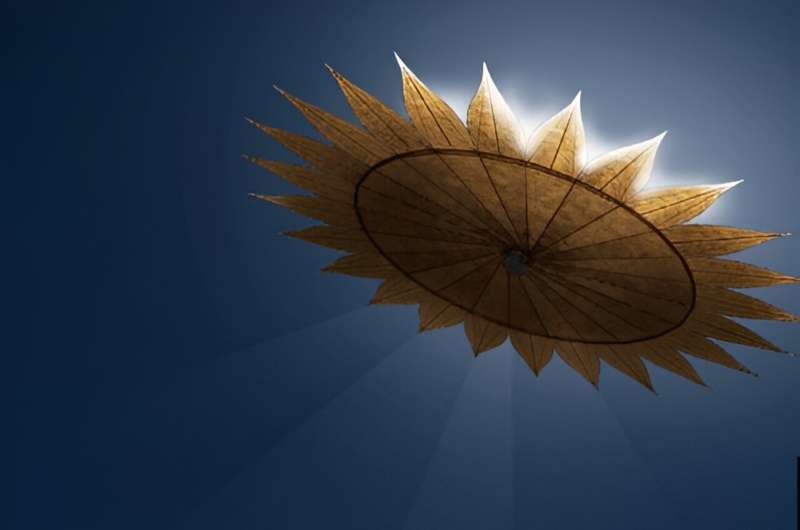Enter the Habitable Worlds Observatory (HWO), which was first proposed as NASA's next flagship Astrophysics mission during the National Academy of Sciences' Decadal Survey on Astronomy and Astrophysics 2020 (Astro2020).
While its potential technological capabilities include studying exoplanets, stars, galaxies, and a myriad of other celestial objects for life beyond Earth, there's a long way to go before HWO will be wowing both scientists and the public with breathtaking images and new datasets.
"Before we can design the mission, we need to develop the key technologies as much as possible," said Dr. Dimitri Mawet, who is a Professor of Astronomy at Caltech and a Senior Research Scientist at the NASA Jet Propulsion Laboratory (JPL). "We are in a phase of technology maturation. The idea is to further advance the technologies that will enable the Habitable Worlds Observatory to deliver its revolutionary science while minimizing the risks of cost overruns down the line."
Dr. Mawet is one of 56 individuals who have been selected to be part of the Technical Assessment Group (TAG) for HWO, which is scheduled to hold their first meetings in Washington D.C. between October 31 and November 2, 2023. As part of these meetings, the individuals will be organized into two groups as part of NASA's "Great Observatory Maturation Program" (GOMAP): Science, Technology, Architecture Review Team (START) and a Technical Assessment Group (TAG) (a full member list for both teams is available here). While START will focus on HWO'S science goals, TAG will focus on HWO'S design and the necessary technology to meet the design requirements.
"The Decadal Survey recommended this mission as its top priority because of the transformational capabilities it would have for astrophysics, together with its ability to understand entire solar systems outside of our own," said Dr. Fiona Harrison, who co-chaired the Astro2020 decadal report committee and is a Harold A. Rosen Professor of Physics and the Kent and Joyce Kresa Leadership Chair of the Division of Physics, Mathematics and Astronomy, both at Caltech.
For now, trying to identify biosignatures on exoplanets is limited to studying their atmospheres using spectroscopy, a method that involves analyzing light to identify any gases that might be present. A key aspect of analyzing exoplanet atmospheres is blocking out the immense glare from an exoplanet's parent star, leaving only faint starlight that reflects off a nearby exoplanet's atmosphere. This blocking of star glare is conducted with one of two primary ways: a coronagraph and a starshade.
First invented by French astronomer Dr. Bernard Lyot in 1939 to study our sun, a coronagraph is internal to the telescope and blocks out starlight through a multi-step process involving a mask, a washer (also called a Lyot stop), and a special mirror all working in tandem to first reduce large amounts of starlight coming into the telescope and finally revealing the exoplanets that were hiding within the star's glare. Astronomers then can use spectroscopy to analyze the light from these exoplanets to identify gases within their respective atmospheres.
Currently, NASA's Hubble Space Telescope and JWST are the only space telescopes that use coronagraphs to study exoplanets, along with several ground-based telescopes, including the European Southern Observatory's (ESO) Very Large Telescope (VLT), the Gemini Planet Imager, and telescopes located at the Keck Observatory in Hawaii. Going forward, there are plans for NASA's upcoming Nancy Grace Roman Space Telescope (often shortened as the Roman Space Telescope) to use an advanced coronagraph known as the Coronagraphic Instrument (CGI) for imaging gaseous exoplanets, with Roman slated to launch onboard a SpaceX Falcon Heavy sometime in 2027.
If a coronagraph is internal to the telescope, the starshade is its external counterpart. While no current space telescopes employ starshades, development models designed and built by NASA would detach from a future space telescope and unfurl at a certain distance in front of it, acting like a literal shade to block out starlight from a distant star, with the goal of revealing the exoplanets in orbit. While the starshade method offers a myriad of engineering challenges, including the proper unfurling and deployment at the correct distance in front of the space telescope, scientists hypothesize both its simplicity and versatility in being able to be used for science other than hunting exoplanets could make it an ideal addition for future space telescopes.
"We estimate there are as many as several billion Earth-size planets in the habitable zone in our galaxy alone," said Dr. Nick Siegler, who is the chief technologist of NASA's Exoplanet Exploration Program at NASA JPL. "We want to probe the atmospheres of these exoplanets to look for oxygen, methane, water vapor, and other chemicals that could signal the presence of life. We aren't going to see little green men but rather spectral signatures of these key chemicals, or what we call biosignatures."
Dr. Siegler noted that NASA has chosen the coronagraph path for HWO, as indicated by its potential use on the upcoming Roman Space Telescope. Per the Decadal Survey, HWO is slated to launch sometime in the late 2030s or early 2040s with the observing time planned to be split between studying exoplanets and common astrophysics.
Provided by Universe Today



